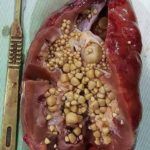Antibiotics May Lead to Kidney Stones
The instances of kidney stones have risen dramatically in new demographics like children, women, and African Americans and a newly released study from the Children’s Hospital of Philadelphia has found that taking commonly prescribed antibiotics is a factor in that rise. Researchers examined the health records of 25,981 people 3 to 12 months before their first incidence of kidney stones and a control group consisting of 259,797 people without kidney stones. They discovered that the risk of kidney stones increased after patients were given any of 5 different categories of often used antibiotics; sulfas, cephalosporins, fluoroquinolones, nitrofurantoin/methenamine, and broad-spectrum penicillins. The risk increase was anywhere from 27 percent higher for penicillins to twice that number for sulfonamides. Gregory E. Tasian, MD, MSc, MSCE, a pediatric urologist and epidemiologist at The Children’s Hospital of Philadelphia (CHOP) led the study. Based on his experience,
The emergence of kidney stones in children is particularly worrisome, because there is limited evidence on how to best treat children for this condition…The fact that stones were once rare and are now increasingly common could contribute to the inappropriate use of diagnostic tests such as CT scans for children with kidney stones, since healthcare providers historically have not been accustomed to evaluating and treating children with kidney stones. These trends of increased frequency of kidney stones among adolescents, particularly females, are also concerning when you consider that kidney stones are associated with a higher risk of chronic kidney disease, cardiovascular and bone disease, particularly among young women.”
Related: Natural Remedies for Kidney Stones, Prevention, and What Really Causes Them
Kidney Stones And Other Disease
Long associated with older men, the rising risk of kidney stones among other parts of the population means other, connected health conditions will likely increase as well. Kidney stones have been linked to chronic kidney disease, heart disease, stroke, and bone disease. There has been a correlation between the increase in kidney stones and the increase of some of these conditions, and that’s becoming more difficult to ignore. For example, the lifetime risk for kidney stones for women between 1997 and 2012 rose from 10.5% to 15.2%. Meanwhile, the rate of hospitalization for women aged 35-44 due to acute ischemic strokes rose by 30%.
Related: How to Detoxify From Antibiotics and Other Chemical Antimicrobials
Kidney stones by no means guarantee someone will have a stroke, but both conditions are affecting increasingly younger and more diverse demographics. Kidney stones are likely to reoccur, increasing the risk for other diseases related to kidney stones. What does that look like for a twenty-year-old who has developed kidney stones?
Related: Inexpensive, Easy Detox – The One Gallon Challenge
The Key is Holistic
It’s so easy to look for or focus on a single reason that things have happened. We all want a definitive answer or an easy scapegoat. But the real answers are often messier. Our lives and our health are made up of minute ripples, that we don’t keep track of and forget about until all of a sudden it’s serious. If a recurring issue isn’t addressed at the root cause (likely diet), it will continue to accumulate damage in the body, until the body is no longer able to function properly. Kidney stones are not the only serious health condition becoming more prevalent in younger people. This will be the first generations of Americans with shorter, lower quality lifespans than the previous generation. The system is designed to keep us well enough to function, but that doesn’t always equate with a high quality of life.
Recommended Reading:
- Best Supplements To Kill Candida and Everything Else You Ever Wanted To Know About Fungal Infections
- Holistic Guide to Healing the Endocrine System and Balancing Our Hormones
- Detox Cheap and Easy Without Fasting – Recipes Included
- Start Eating Like That and Start Eating Like This – Your Guide to Homeostasis Through Diet
Sources:
- Oral antibiotics tied to increased risk of kidney stones – Reuters
- CHOP Study Linking Kidney Stones and Oral Antibiotics Receives National and Local Media Coverage – Children’s Hospital of Philadelphia
- Kidney Stones on the Rise in the United States – Medscape
- Kidney stones may increase the risk of coronary heart disease and stroke: A PRISMA-Compliant meta-analysis – Medicine
- Prevalence of Cardiovascular Risk Factors and Strokes in Younger Adults – JAMA Network
